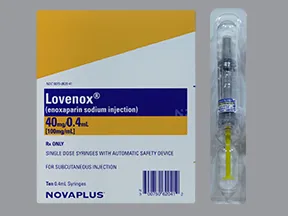

They are also used to treat current DVTs or pulmonary emboli.Īppropriate management of warfarin therapy requires monitoring of patients’ international normalised ratios (INRs). They are used for several indications, including thromboprophylaxis for patients with atrial fibrillation, or who have undergone a mechanical heart valve replacement or had deep vein thrombosis (DVT). Oral vitamin K antagonist anticoagulants (eg, warfarin sodium) are prescribed for around 500,000 patients in the UK at any one time 1. We do not recommend that you take any clinical decisions based on this information without first ensuring you have checked the latest guidance. Journal of Pharmaceutical Health Services Research.International Journal of Pharmacy Practice.Antimicrobial resistance and stewardship.The use of direct thrombin inhibitors and anti-Xa direct oral anticoagulants is still not recommended (Class 3). If warfarin 5 mg/day is required, dose-adjusted LMWH during the first trimester, followed by warfarin for the second and third trimester, may be considered (Class 2a) or with continuation of LMWH for the second and third trimesters (Class 2b).If urgent delivery via C-section is required, anticoagulation should be reversed first. UFH should be stopped ≥6 hours before planned vaginal delivery (Class 1). Ideally, a switch to low molecular weight heparin (LMWH) (with target anti-Xa level of 0.8-1.2 U/ml 4-6 hours after dose) or IV unfractionated heparin (UFH) (with activated partial thromboplastin time 2x control) is made ≥1 week before planned delivery, followed by a switch to UFH ≥36 hours before planned delivery.During the first trimester, warfarin is associated with the lowest likelihood of maternal complication but highest likelihood of miscarriage, fetal death, and congenial malformation, especially when the warfarin dose exceeds 5 mg/day. Women with mechanical prosthetic valves have high-risk pregnancies and should be monitored closely.

In pregnant women with either severe rheumatic MS, severe aortic stenosis, or severe mitral regurgitation with NHYA class III or IV symptoms refractory to medical therapy, intervention during pregnancy is reasonable (Class 2a).For women undergoing valve replacement prior to pregnancy, the choice of the type of valve should be made through a shared decision-making process. If there is severe mitral regurgitation (Stage C1), and the valve is suitable to repair, this should be considered (Class 2b). For MS, a percutaneous mitral balloon commissurotomy should be considered if there is favorable valve morphology (Class 2a). In asymptomatic women considering pregnancy with either severe rheumatic mitral stenosis (MS) (mitral valve area ≤1.5 cm 2, Stage C1) or severe aortic stenosis (aortic velocity ≥4.0 m/s or mean pressure gradient ≥40 mm Hg), valve intervention prior to conception is reasonable.Women with severe valve disease (Stages C and D) considering pregnancy should undergo pre pregnancy counseling and appropriate testing by a cardiologist with expertise in managing valvular heart disease in pregnancy with subsequent monitoring at a tertiary care center with a dedicated Heart Valve Team (Class 1).However, if there has been extensive neurologic damage or intracranial hemorrhage, it is advised to wait ≥4 weeks (Class 2b). In patients with IE with an indication for surgery who suffered a stroke without intracranial hemorrhage, surgery without delay may still be considered.In patients with prosthetic valve IE and relapsing infection after completion of an antibiotic course, surgery is recommended (Class 1). For patients with mixed moderate aortic stenosis/aortic regurgitation who have developed left ventricular (LV) dysfunction (LV ejection fraction 5 days recurrent emboli and persistent vegetation native left-sided valve IE with a mobile vegetation >10 mm in length.

For ambiguous symptoms, use of biomarkers or invasive hemodynamics at rest or exercise should be considered as adjuncts to traditional imaging.


 0 kommentar(er)
0 kommentar(er)
